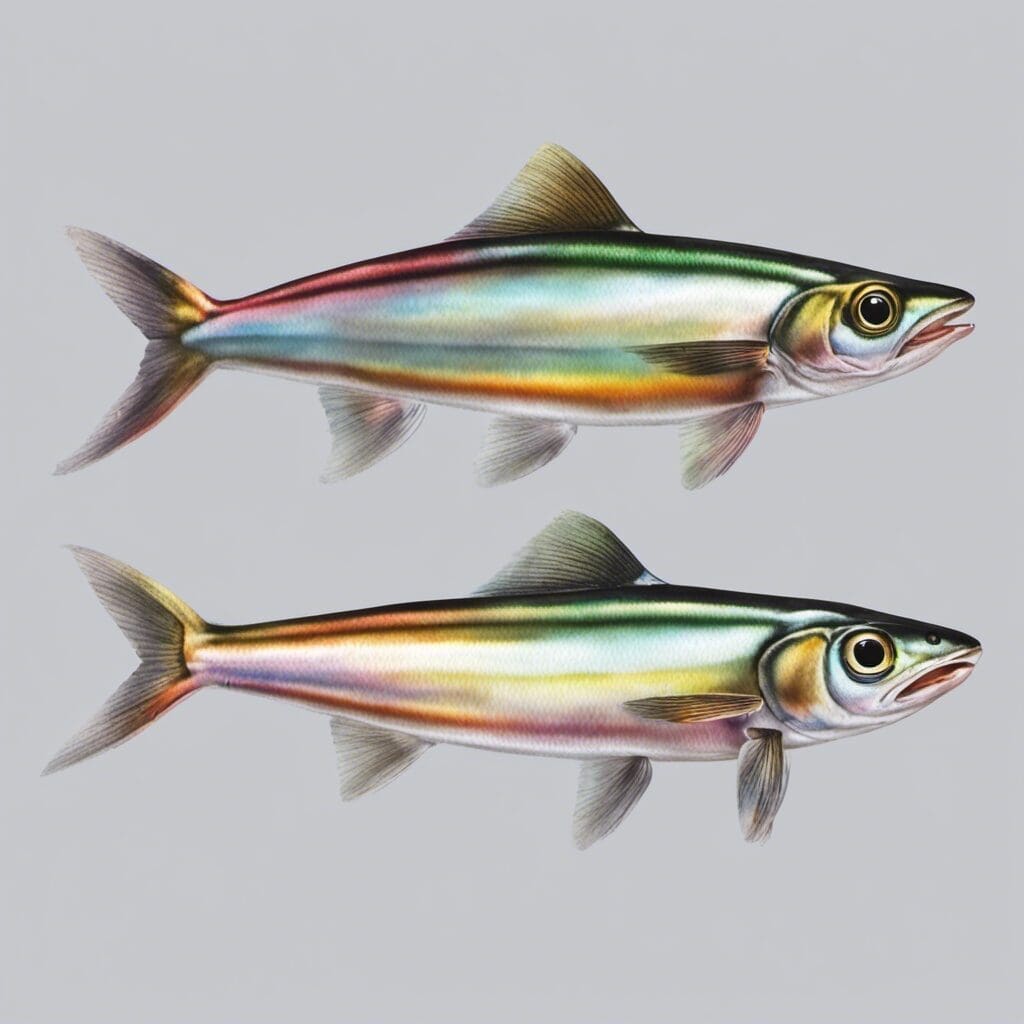Introduction
Known for its vibrant colours and slender profile, the Rainbow Smelt belongs to the Osmeridae family. Biologists celebrate this species for its resilience, adaptability, and crucial role in aquatic food chains.
Conservation Status
The Rainbow Smelt has a ‘Least Concern’ classification from the IUCN. This is due to its widespread distribution and fairly large population. Current conservation efforts focus on maintaining its habitat and minimizing human-induced hazards.
Statistics
| Stat | Average | Range |
|---|---|---|
| Length | 15 cm | 9-20 cm |
| Weight | 25 grams | 14-42 grams |
| Average Lifespan | 4-6 years | N/A |
Distribution
Rainbow Smelt can be found in the cold waters of the northern hemisphere in regions like North America, parts of Eurasia, and the Arctic Ocean. They typically migrate downstream to spawn in spring, while juveniles move upstream later in the year.
Habitats
Rainbow Smelt thrive in both fresh and saltwater, with a depth range of 30 to 60 metres. They prefer cold waters, with temperatures ranging between 0-10°C (32-50°F).
When and Where to See
The species can be spotted during spring and fall migrations, often during dawn or dusk. These tiny fish are nocturnal, becoming most active after sundown.
Best Fishing Locations
- Lake Superior, Minnesota
- Lake Michigan, Wisconsin
- Lake Huron, Michigan
- Lake Erie, Ohio
- Lake Ontario, New York
- Sebago Lake, Maine
- Nipigon River, Ontario
- Missisquoi Bay, Lake Champlain
- Atlantic Ocean, off the coast of New Brunswick
- Atlantic Ocean, off the coast of Newfoundland
Note: Look for areas with cold, clear water, be it in large lakes or off the coast in the Atlantic Ocean.
How to Catch
Use small jigs, flies, or bait such as shrimp. Fly fishing, trolling, and bottom fishing techniques work well. Nighttime, especially after sundown, is the best fishing time.
Identification Guide
Identifying Rainbow Smelt involves noting their slender physique, vibrant yet pale silvery colors, small mouth, and adipose fin. Rainbow Smelt have an iridescent hue and white belly, helping to distinguish them from similar species.
Culinary
Rainbow Smelt is savory and mild, with meat that’s easily flaked. A popular cooking method involves frying the fish in batter. Packed with proteins and healthy fats, it’s a nutritious addition to the diet. Look for recipes that highlight its flavors, like pan-fried Rainbow Smelt or Smelt fish tacos.
Additional Information
The species is omnivorous, feeding on zooplankton, crustaceans, and smaller fish. Predators include larger fish species and birds. Rainbow Smelt’s vibrant coloration has inspired artists and fishers alike, giving it a place in local folklore and mythology.
References and Further Reading
- FishBase
- Animal Diversity Web (ADW)
- iNaturalist
- Great Lakes Environmental Assessment and Mapping Project

